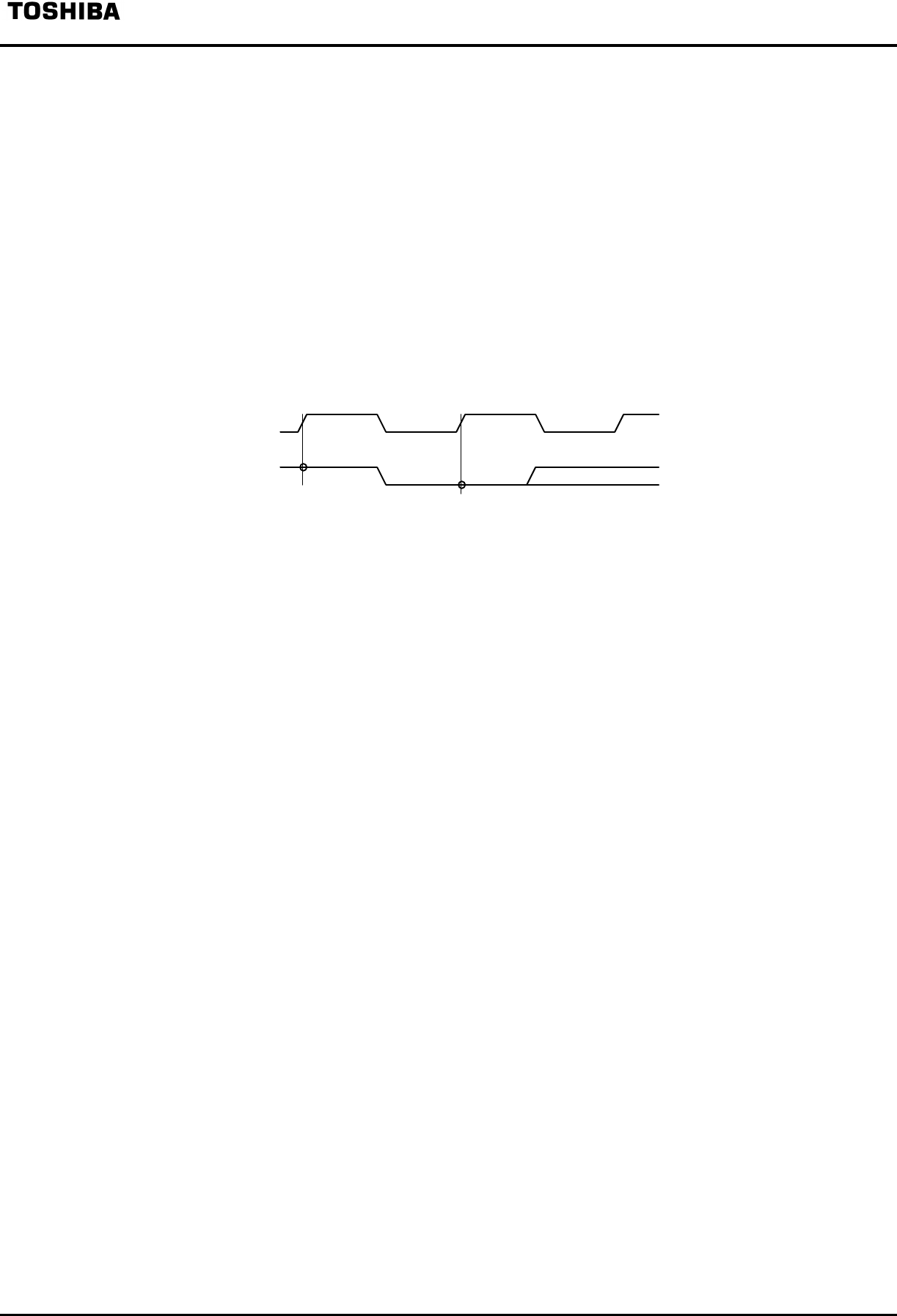
TMPR3901F
225
4.4 Interrupts
The TMPR3901F supports six hardware interrupts and two software interrupts. It also supports a non-
maskable interrupt. The INT[5:0]* signals can be used to raise interrupt exceptions. The NMI* signal is used to
raise a non-maskable interrupt exception. All of the interrupt signals are low-active and should be synchronous
with SYSCLK rising edge.
4.4.1 NMI*
The TMPR3901F recognizes an NMI* signal on the SYSCLK rising edge (Figure 4-6).
1 Recognize NMI* high signal.
2 Recognize NMI* transition from high to low thus invoking non-maskable interrupt.
A non-maskable interrupt occurs when the TMPR3901F recognizes a high to low transition of the
NMI* signal. The TMPR3901F registers this transition in an internal circuit. An external circuit
invokes a non-maskable interrupt exception by asserting the NMI* signal for one clock cycle however,
since the NMI* signal is valid only on a transition from high to low, it must be taken high and then low
again in order to generate successive non-maskable interrupts.
If an NMI* signal high-to-low transition is recognized during a bus operation, the non-maskable
interrupt exception occurs after completion of the bus cycle.
If an NMI* signal high-to-low transition is recognized when the bus is owned by a device other than
the TMPR3901F, the non-maskable interrupt exception occurs after the TMPR3901F has regained
mastership of the bus.
Figure 4-6 Non-maskable interrupt
SYSCLK
NIMI*
1 2


















